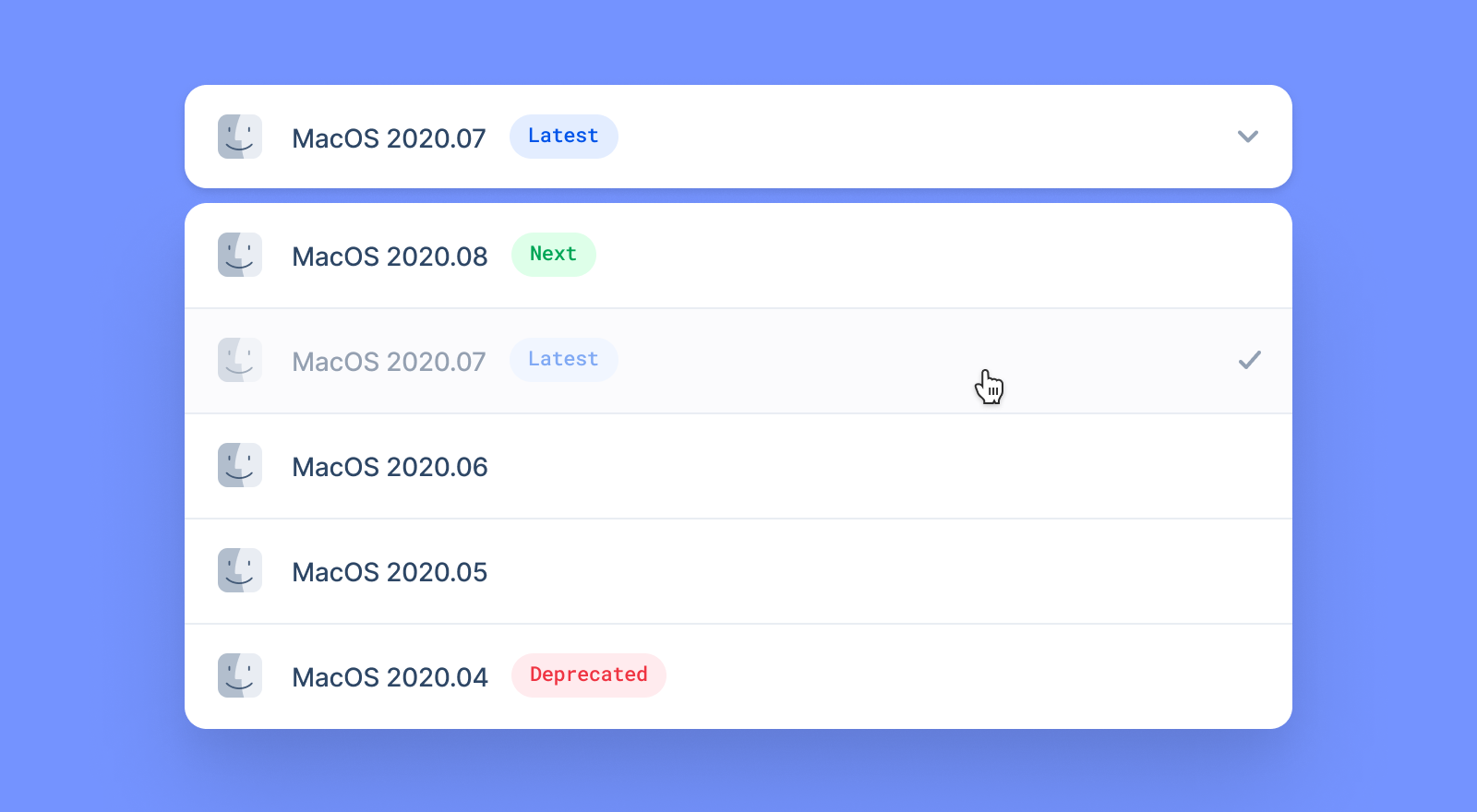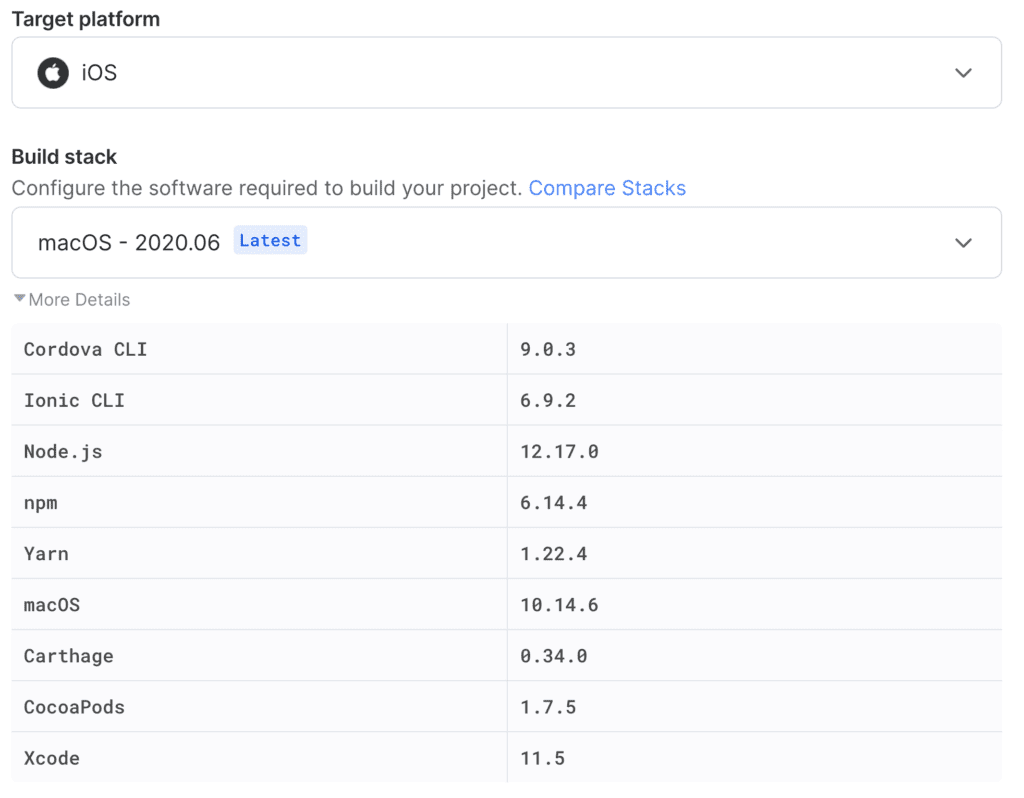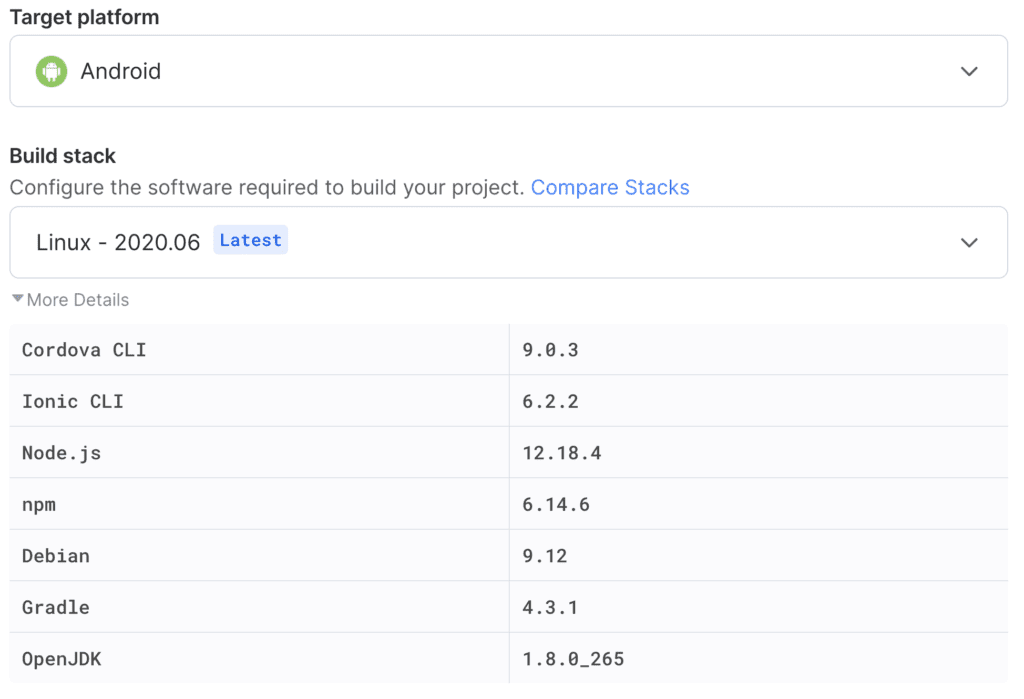Build Stacks in Appflow


Today I’m thrilled to announce the release of Build Stacks in Appflow. Appflow users now have much greater control over their cloud build environments, unlocking better native build stability and easier troubleshooting.
Build Stacks are available for use with all Appflow plans. To view all available Build Stacks, refer to the Appflow docs or create a new native build within Appflow.
What’s in a Stack? 🥞
A Build Stack is a collection of software (including CLIs, native, and web tooling) used to build web and native iOS/Android apps on Appflow. These configurations were always available in Appflow but now exact versions are listed. Here’s the latest iOS Build Stack, which uses macOS to build native apps:
Android uses Linux to build native apps:
Why Build Stacks? 🤔
Modern web and native mobile development require a lot of tools and dependencies to maintain. This is especially challenging in the mobile ecosystem which moves very quickly. However, keeping up to date with the latest updates, patches, and features is easier said than done.
Build Stacks mitigates a lot of the risk of updating your native build tooling. Dev teams can match their local development environment with Appflow to improve their delivery speed while remaining confident that the build infrastructure meets their specific tooling needs. Additionally, the Appflow team verifies each Build Stack extensively before releasing it, ensuring better native build stability for all types of mobile apps.
“Works On My Machine…” 🤷
If you or your team struggle to deliver app updates to your users regularly due to web and native tooling maintenance, now’s a great time to check out Appflow. With Build Stacks, you can focus on shipping new features, instead of constantly wrestling with build tools.
Ready to get started? Complete coverage of Build Stacks is over on the Appflow blog. You can also jump right in by signing up for Appflow using your Ionic account then building a web, iOS, or Android version of your Ionic app in the cloud.




